I am a tenure-track Assistant Professor in the Thrust of Intelligent Transportation (INTR) under the Systems Hub at the Hong Kong University of Science and Technology (Guangzhou). I am also an affiliated Assistant Professor in the Civil and Environmental Engineering Department at the Hong Kong University of Science and Technology. I am happy to host (remote) undergradaute / graduate visitors. Feel free to send me your CV if you are interested and have strong background.
I received my Ph.D. degree in intelligent transportation at the University of Washington (UW), where I served as a research assistant in Smart Transportation Applications and Research Laboratory (STAR Lab) at UW, advised by Prof. Yinhai Wang. For a complete list of my publication, please visit my Google Scholar page or my CV. Before joining STAR Lab, I served as a research assistant in Tongji’s Traffic Safety Research Group, advised by Prof. Xuesong Wang from 2014 to 2018. I worked as a research intern at the Oak Ridge National Laboratory under the supervision of Prof. Hong Wang from June to December, 2019. I was an applied scientist intern at Amazon in Summer 2021. I was a Software Research Intern at Motional for autonomous driving behavior planning.
My research interests include Autonomous Driving, Reinforcement Learning, Driving Behavior, Traffic-Flow Modeling and Simulation, Traffic Signal Control, and Multi-Agent Reinforcement Learning. A summary of my research contributions to date can be found at here. I am a younger committee member of the Connected & Autonomous Vehicles (CAV) Impacts Committee and Artificial Intelligence Committee of ASCE Transportation & Development Institute (T&DI). I am also a committee member of the Subcommittee on Connected and Automated Traffic Flow (CAT-Flow), TRB Committee on Traffic Flow Theory and Characteristics (ACP50).
Ph.D. in Transportation Engineering, 2022
University of Washington
MS in Computer Science, 2023 (expected)
Georgia Institute of Technology
MEng in Communication and Transportation Engineering, 2018
Tongji University
BEng in Traffic Engineering, 2015
Tongji University
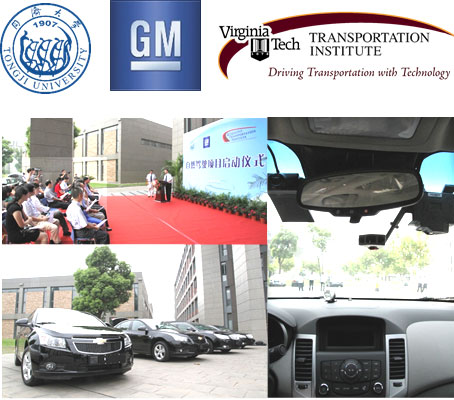
The first large-scale naturalistic driving study in China. A total of 161,055 km of real-world detailed driving data were collected from 60 Chinese drivers, providing an unprecedented opportunity for investigating driving behavior in China.

A driving simulator study jointly conducted by Tongji University and China First Automobile Work Corporation. Tongji University’s eight-degree-freedom driving simulator (its fidelity ranking top 3 in the world) was used. Its primary purpose is to improve the understanding of drivers’ collision avoidance behavior under different rear-end scenarios and to develop an effective forward collision warning strategy.
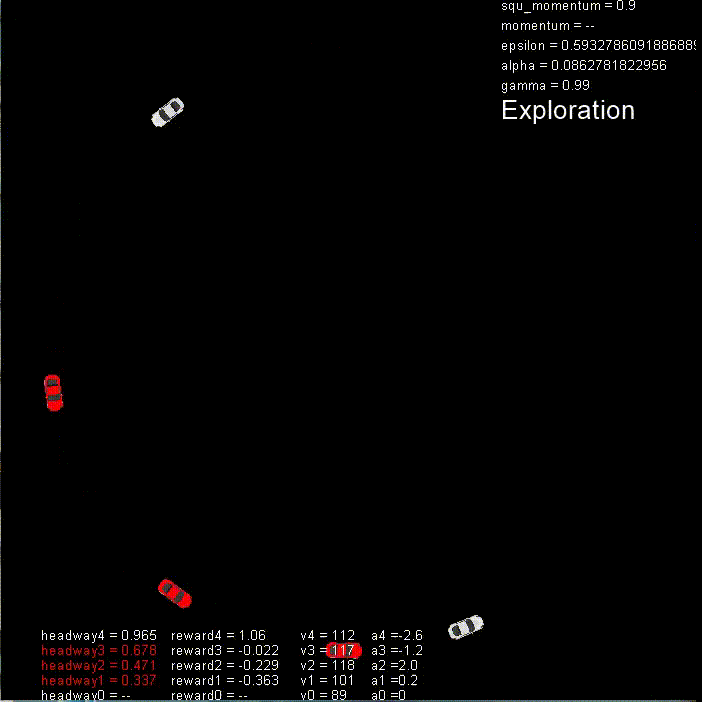
This on-going project aims to develop autonomous car-following strategies based on deep reinforcement learning.The demo animation shows the car-following learning process of the RL agents (cars). In early training episodes, cars become red frequently, indicating penalties caused by bad performances in car following, e.g., rear-end crashes. As training converges, the RL agents maintain steady car-following headways and receive fewer penalties.
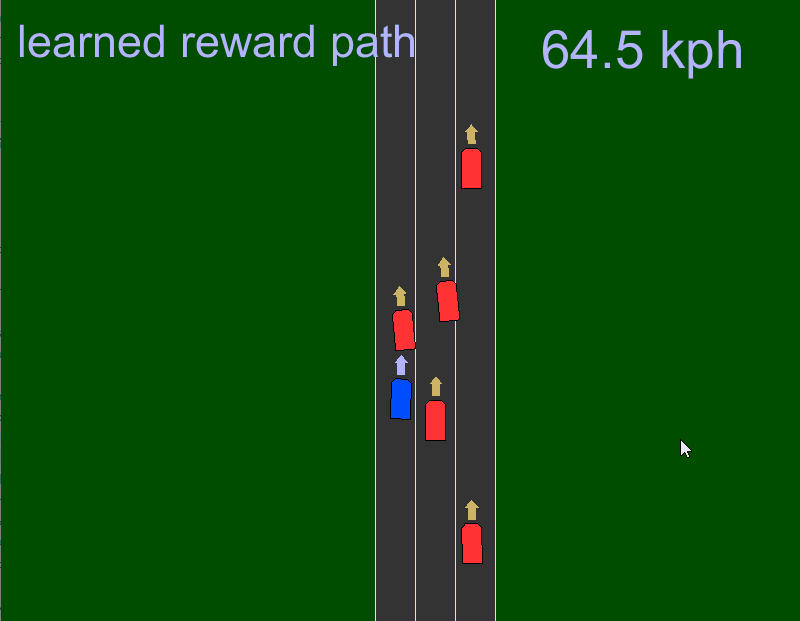
This on-going project is inspired by Levine et al. (2012). It aims to imitate human driving patterns. The assumption is that drivers act based on a utility (reward) function, which represents the preference of the driver and elicits the driving behavior. The role of inverse reinforcement learning is to infer or discover the latent utility function from driver (expert) demonstrations and thus generalize the driving policy to unobserved situations.
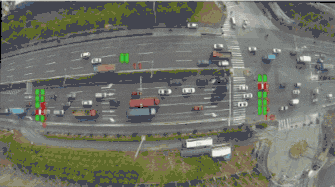
This project aimed to extract real-time traffic flow parameters, including volume, density, and intersection delay, etc., based on videos captured by an unmanned aerial vehicle. The featured animation demonstrates the extraction of traffic-flow parameters by setting virtual loop detectors.
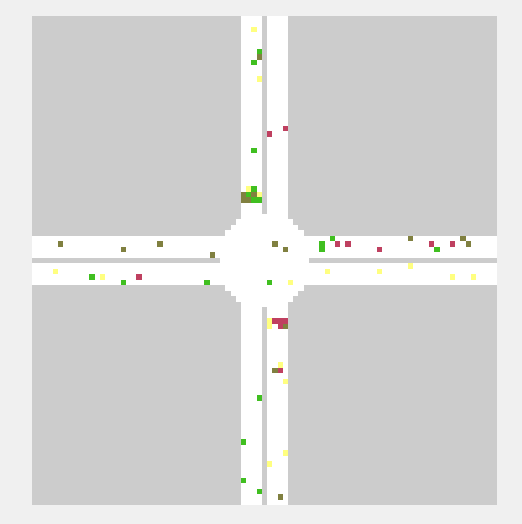
This project aimed to model the keep-right-except-to-pass rule using Cellular Automaton. The cellular automaton system is a discrete dynamic system consisting of a regular grid of cells, each in one of a finite number of states. And the state of each cell is updated every single discrete time step according to the updating rules, which are determined by the current state of the cell and the states of its neighbor cells.

Evaluating the safety performance of combined horizontal and vertical alignments in mountainous freeways, to guide the design of safer mountainous freeways.